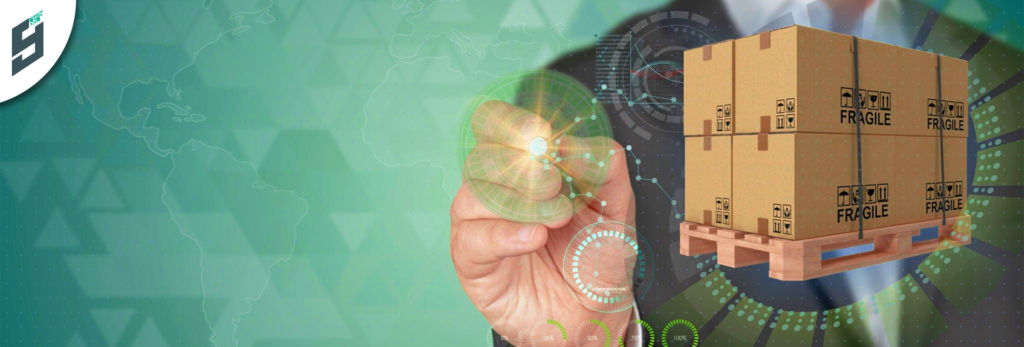
In today’s world, online shopping has become a norm. With just a few clicks on your phone or laptop, you can conveniently shop from the comfort of your home and have your favorite products delivered right at your doorstep. As online shopping continues to gain popularity, package consolidation has become a critical component of the logistics industry. In this blog post, we will take a closer look at the evolution and impact of package consolidation.
Table of Contents
Imagine going back in time to an era when package consolidation didn’t exist, and each tiny package was sent individually. It’s hard to think about, isn’t it? But that was the reality not too long ago. In this blog post, we’re going on a time-traveling adventure to explore the evolution of package consolidation.
II. The Early Days of Shipping and Package Consolidation
In the days before the Industrial Revolution, packaging and consolidation were rudimentary at best. Goods were typically wrapped in basic, natural materials and shipped individually, which was time-consuming, expensive, and not very environmentally friendly.
With the onset of the Industrial Revolution, everything changed. The birth of modern packaging brought the concept of consolidation to life. Goods could now be packaged more efficiently and shipped together, leading to cost savings and a decrease in waste.
III. The Emergence of Package Consolidation Services
Fast forward to the post-World War II era. With the global economy on the rise, the need for effective package consolidation became evident. That’s when package consolidation services began to sprout, with pioneers and innovators transforming the logistics landscape.
But the road wasn’t always smooth. Early package consolidation faced challenges like limited technology, regulatory issues, and logistical hurdles. However, these challenges were met with innovative solutions, propelling the industry forward.
IV. Technological Advancements and Package Consolidation
Enter the era of computers and software. This revolution significantly enhanced package consolidation by making it easier to track and manage shipments. The internet and e-commerce, on the other hand, made package consolidation a necessity, with goods now being ordered from all corners of the globe.
More recently, the emergence of smart technologies and AI has pushed package consolidation to new heights. These advancements have made the process more efficient, accurate, and customer-friendly.
V. Major Players in Package Consolidation
The package consolidation industry wouldn’t be where it is today without some key players. FedEx and UPS, for example, have dominated the market with their extensive networks and innovative solutions.
However, regional players and niche markets also have a significant role in shaping the industry. These companies cater to specific customer needs and often provide more personalized services.
New disruptors are also entering the fray, leveraging advanced technologies and unconventional methods to carve out a piece of the package consolidation pie.
VI. Benefits and Challenges of Package Consolidation
Package consolidation offers numerous economic and environmental benefits. By reducing the number of shipments, it saves money and cuts down on carbon emissions.
However, it’s not all smooth sailing. Security, privacy, and regulatory issues pose challenges that the industry continually needs to address. Despite these challenges, many businesses successfully utilize package consolidation, as we’ll see in a case study later on.
VII. Package Consolidation and Globalization
Package consolidation has played a vital role in facilitating international trade. By making shipping more efficient and cost-effective, it has helped businesses reach customers around the globe.
In emerging markets, package consolidation has been a game-changer, enabling local businesses to participate in global trade.
However, international package consolidation is not without its challenges. Different regulations, customs procedures, and logistical hurdles mean that the future of international package consolidation will need to be innovative and adaptable.
VIII. The Future of Package Consolidation
So, what’s next for package consolidation? Predicting trends in this dynamic industry can be tricky, but one thing is for sure: technology will continue to play a central role.
From AI to blockchain, technological innovations hold great potential to streamline and enhance package consolidation further. And with a growing emphasis on sustainability, the industry will likely focus more on eco-friendly practices.
The concept of package consolidation dates back to the early 2000s when several package forwarding companies started operating in the United States. These companies offer a service that receives and consolidates packages from different retailers into a single shipment. This service enables customers to save on shipping costs, especially when shopping from different retailers that require separate shipments.
Package consolidation has come a long way from its humble beginnings. It has evolved from a simple concept to a complex process involving advanced technology and intricate logistics. As we look toward the future, it’s clear that package consolidation will continue to play a crucial role in global commerce, propelled by technological innovation and an increasing focus on sustainability.
The growth of online shopping has fueled the need for package consolidation in the logistics industry. Package consolidation has enabled retailers and customers to save on shipping costs, optimize shipping operations, reduce the environmental impact of shipping, access new markets, and reduce the number of lost or damaged packages. As technology continues to evolve, we can expect to see further innovations in package consolidation that will enable even more cost-effective and sustainable shipping solutions.
X. Frequently Asked Questions
Now, let’s quickly address some of the questions you might still have:
What is Package Consolidation?
It’s the process of combining multiple packages into one shipment, resulting in cost savings and efficiency.
How has Package Consolidation Evolved Over Time?
It began as a basic concept during the Industrial Revolution and has evolved into a complex process, greatly aided by advancements in technology.
What are the Major Benefits and Challenges of Package Consolidation?
The benefits include cost savings, efficiency, and reduced environmental impact. Challenges include security, privacy, and regulatory issues.
Who are the Major Players in Package Consolidation?
Giants like FedEx and UPS, smaller regional players, and new disruptors are all shaping the industry.
How is Technology Shaping the Future of Package Consolidation?
Technologies like AI, IoT, and blockchain are enhancing efficiency, accuracy, and security in package consolidation.
So, there you have it – a peek into the fascinating journey of package consolidation. Who knew there was so much behind that neatly packed box you receive at your doorstep? Next time you open a consolidated package, you’ll appreciate the centuries of innovation that made it possible.

